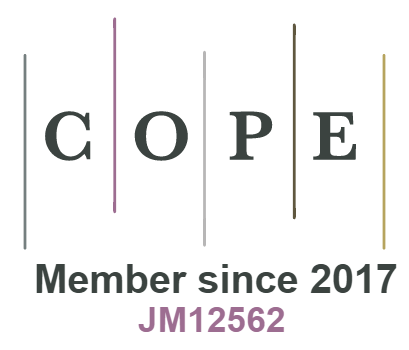Visualizing the Impact of Cyberattacks on Web-Based Transactions on Large-Scale Data and Knowledge-Based Systems
DOI:
https://doi.org/10.18034/ei.v7i2.578Keywords:
Cyberattacks, Coordinate Systems, Intrusion Detection Systems, Web-Based Transactions, Security AdministratorsAbstract
Manual approaches rely on the abilities and knowledge of individual human administrators to detect, analyze, and interpret attacks. Intrusion Detection Systems (IDS) are systems that can automatically detect and warn the appropriate persons when an attack occurs. Despite the fact that individual attacks can be useful, they are frequently insufficient for understanding the entire attacking process, as well as the attackers' talents and objectives. The attacking stage is usually merely a component of a larger infiltration process, during which attackers gather information and set up the proper conditions before launching an attack, after which they clear log records in order to conceal their footprints and disappear. In today's assault scenarios, the pre-definition of cause-and-effect links between events is required, which is a tough and time-consuming task that takes considerable effort. Our technique for creating attack scenarios is based on the linking nature of web pages, and it does not require the pre-definition of cause and effect links, as demonstrated in previous work. Constructed situations are displayed in spatial and temporal coordinate systems to make viewing and analyzing them more convenient. In addition, we develop a prototype implementation of the concept, which we utilize to test a number of assault scenario scenarios.
Downloads
References
Amin, R., & Manavalan, M. (2017). Modeling Long Short-Term Memory in Quantum Optical Experiments. International Journal of Reciprocal Symmetry and Physical Sciences, 4, 6–13. Retrieved from https://upright.pub/index.php/ijrsps/article/view/48
Bynagari, N. B. (2016). Industrial Application of Internet of Things. Asia Pacific Journal of Energy and Environment, 3(2), 75-82. https://doi.org/10.18034/apjee.v3i2.576
Bynagari, N. B. (2017). Prediction of Human Population Responses to Toxic Compounds by a Collaborative Competition. Asian Journal of Humanity, Art and Literature, 4(2), 147-156. https://doi.org/10.18034/ajhal.v4i2.577
Bynagari, N. B. (2018). On the ChEMBL Platform, a Large-scale Evaluation of Machine Learning Algorithms for Drug Target Prediction. Asian Journal of Applied Science and Engineering, 7, 53–64. Retrieved from https://upright.pub/index.php/ajase/article/view/31
Bynagari, N. B., & Fadziso, T. (2018). Theoretical Approaches of Machine Learning to Schizophrenia. Engineering International, 6(2), 155-168. https://doi.org/10.18034/ei.v6i2.568
Debar, H. and Wespi, A. (2001). Aggregation and Correlation of Intrusion-Detection Alerts. In: Lee W., Mé L., Wespi A. (eds) Recent Advances in Intrusion Detection. RAID 2001. Lecture Notes in Computer Science, vol 2212. Springer, Berlin, Heidelberg. https://doi.org/10.1007/3-540-45474-8_6
Fadziso, T., & Manavalan, M. (2017). Identical by Descent (IBD): Investigation of the Genetic Ties between Africans, Denisovans, and Neandertals. Asian Journal of Humanity, Art and Literature, 4(2), 157-170. https://doi.org/10.18034/ajhal.v4i2.582
Johnson, M. H., Dziurawiec, S., Ellis, H., & Morton, J. (1991). Newborns' preferential tracking of face-like stimuli and its subsequent decline. Cognition, 40(1-2), 1–19. https://doi.org/10.1016/0010-0277(91)90045-6
Kawamoto, M., and Itoh, T. (2010). A Visualization Technique for Access Patterns and Link Structures of Web Sites. 2010 14th International Conference Information Visualisation, 11-16. https://doi.org/10.1109/IV.2010.11
Lee, B., Riche, N. H., Isenberg, P. and Carpendale, S. (2015). More than Telling a Story: Transforming Data into Visually Shared Stories. IEEE Computer Graphics and Applications, 35(5), 84-90. https://doi.org/10.1109/MCG.2015.99
Livnat, Y. Agutter, J., Moon, S., Erbacher, R. F. and Foresti, S. (2005). A visualization paradigm for network intrusion detection. Proceedings from the Sixth Annual IEEE SMC Information Assurance Workshop, 92-99. https://doi.org/10.1109/IAW.2005.1495939
Manavalan, M. (2016). Biclustering of Omics Data using Rectified Factor Networks. International Journal of Reciprocal Symmetry and Physical Sciences, 3, 1–10. Retrieved from https://upright.pub/index.php/ijrsps/article/view/40
Manavalan, M. (2018). Do Internals of Neural Networks Make Sense in the Context of Hydrology?. Asian Journal of Applied Science and Engineering, 7, 75–84. Retrieved from https://upright.pub/index.php/ajase/article/view/41
Manavalan, M., & Bynagari, N. B. (2015). A Single Long Short-Term Memory Network can Predict Rainfall-Runoff at Multiple Timescales. International Journal of Reciprocal Symmetry and Physical Sciences, 2, 1–7. Retrieved from https://upright.pub/index.php/ijrsps/article/view/39
Manavalan, M., & Donepudi, P. K. (2016). A Sample-based Criterion for Unsupervised Learning of Complex Models beyond Maximum Likelihood and Density Estimation. ABC Journal of Advanced Research, 5(2), 123-130. https://doi.org/10.18034/abcjar.v5i2.581
Manavalan, M., & Donepudi, P. K. (2016). A Sample-based Criterion for Unsupervised Learning of Complex Models beyond Maximum Likelihood and Density Estimation. ABC Journal of Advanced Research, 5(2), 123-130. https://doi.org/10.18034/abcjar.v5i2.581
Ning, P., Cui, Y., and Reeves, D. S. (2002). Constructing attack scenarios through correlation of intrusion alerts. In Proceedings of the 9th ACM conference on Computer and communications security (CCS '02). Association for Computing Machinery, New York, NY, USA, 245–254. https://doi.org/10.1145/586110.586144
Nkhoma, M. Z. and Dang, D. P. T. (2013). Contributing Factors of Cloud Computing Adoption: a Technology-Organisation-Environment Framework Approach. International Journal of Information System and Engineering, 1(1), 30-41. https://doi.org/10.24924/ijise/2013.04/v1.iss1/30.41
Paxson, V. (1999). Bro: A System for Detecting Network Intruders in Real-Time. Computer Networks, 31(23–24), 2435–2463. https://www.icir.org/vern/papers/bro-CN99.pdf
Plaisant, C. (2004). The challenge of information visualization evaluation. In Proceedings of the working conference on Advanced visual interfaces (AVI '04). Association for Computing Machinery, New York, NY, USA, 109–116. https://doi.org/10.1145/989863.989880
Roesch, M. (1999) Snort: Lightweight Intrusion Detection for Networks. LISA, 99, 229-238.
Spiliopoulou, M., Mobasher, B., Berendt, B., Nakagawa, M. (2003). A Framework for the Evaluation of Session Reconstruction Heuristics in Web-Usage Analysis. INFORMS Journal on Computing 15(2), 171-190. https://doi.org/10.1287/ijoc.15.2.171.14445
--0--
Downloads
Published
Issue
Section
License
Engineering International is an Open Access journal. Authors who publish with this journal agree to the following terms:
- Authors retain copyright and grant the journal the right of first publication with the work simultaneously licensed under a CC BY-NC 4.0 International License that allows others to share the work with an acknowledgment of the work's authorship and initial publication in this journal.
- Authors are able to enter into separate, additional contractual arrangements for the non-exclusive distribution of the journal's published version of their work (e.g., post it to an institutional repository or publish it in a book), with an acknowledgment of its initial publication in this journal. We require authors to inform us of any instances of re-publication.









